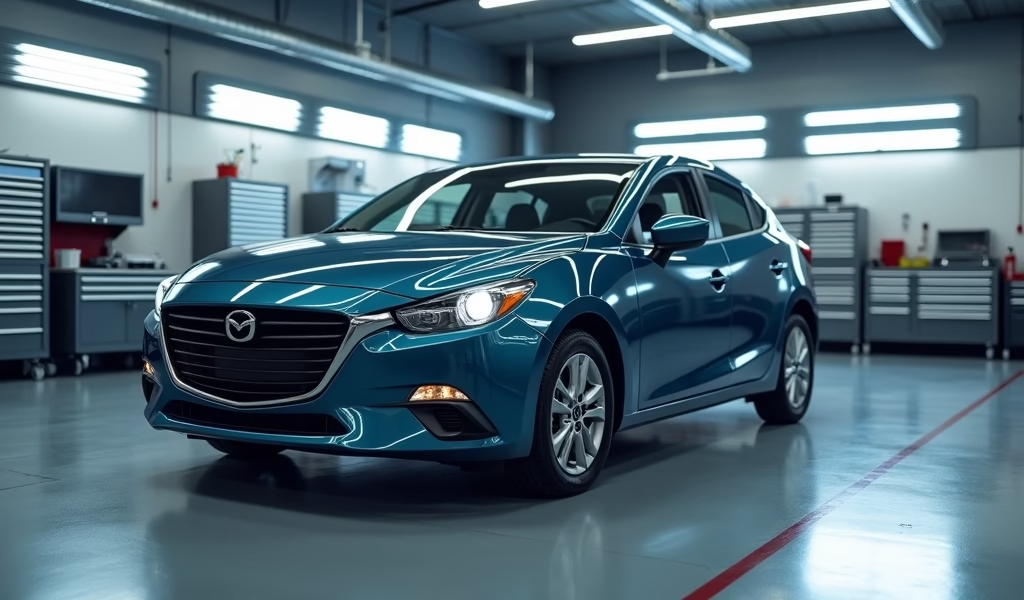Overview
This article explains why young drivers face high insurance premiums and offers practical strategies to reduce costs, including choosing insurance companies like Geico and Progressive, maximizing discounts for good grades and safe driving, selecting appropriate coverage levels, and comparing quotes from multiple providers. Young drivers can significantly lower their premiums by selecting the right vehicle, maintaining good credit, considering higher deductibles, and possibly staying on their parents’ policy until age 25.
Table of Contents
- Understanding Young Driver Insurance: Why So Expensive?
- Best Insurance Companies for Young Drivers
- Discounts Available for Young Drivers
- Coverage Options: What You Need vs. What You Don’t
- Tips to Lower Your Insurance Premiums
- Comparison Shopping: How to Find the Best Deals
- Conclusion
- Frequently Asked Questions
Understanding Young Driver Insurance: Why So Expensive?
Let’s face it—getting your first car insurance quote can feel like a cold bucket of water on the excitement of driving. As someone who’s spent years helping young drivers navigate these waters, I understand the frustration.
Insurance companies see young drivers as high-risk investments, and unfortunately, they have the statistics to back it up. According to the Centers for Disease Control and Prevention, drivers aged 16-19 are nearly three times more likely to be in a fatal crash than drivers over 20. It’s not personal—it’s mathematical.
Several factors contribute to these eye-watering premiums:
- Lack of driving experience (insurers love experienced drivers)
- Higher likelihood of risk-taking behavior
- Greater chance of distracted driving
- No established insurance history
- Statistically higher accident rates
The average annual premium for a teen driver can range anywhere from $2,000 to $5,000 depending on your location, vehicle, and specific circumstances. That’s roughly 2-3 times what older drivers pay for the same coverage.
But don’t lose hope! While you can’t change your age overnight, there are plenty of strategies to find affordable car insurance for young drivers without sacrificing necessary protection.
Best Insurance Companies for Young Drivers

Not all insurance companies view young drivers with the same skeptical eye. Some specialize in providing more competitive rates for the younger crowd. From years of comparing policies and working with new drivers, I’ve seen these companies consistently offer better deals:
Geico
Geico frequently offers competitive rates for young drivers, especially students. Their user-friendly app makes managing your policy painless, and they offer substantial discounts for good grades and defensive driving courses. Their student discount can slash up to 15% off your premium if you maintain a B average or better.
Geico also offers a refreshingly straightforward quote process that doesn’t leave you wondering if you’ve missed something important.
Progressive
Progressive stands out with their “Name Your Price” tool, which helps you find coverage that fits your budget. Their Snapshot program is especially valuable for careful young drivers—it monitors your driving habits through a mobile app and can lead to personalized discounts based on your actual driving behavior rather than just your age group’s statistics.
If you’re a consistently safe driver, Progressive might reward you more generously than other insurers who lump all young drivers together.
State Farm
State Farm offers impressive discounts specifically targeted at younger drivers. Their Steer Clear program can reduce premiums by up to 15% for drivers under 25 who complete a safe driving course and maintain a clean record.
Their Good Student Discount is one of the most generous in the industry, potentially saving students up to 25% for maintaining good grades. This can make a substantial difference for college students balancing tuition and insurance costs.
USAA
If you or your parents have military connections, USAA should be your first stop. Their rates for young drivers from military families are often significantly lower than other major insurers.
USAA consistently receives top marks for customer satisfaction, and they offer driver training discounts and competitive rates for students away at college. The catch is eligibility—you’ll need military connections to qualify.
Erie Insurance
Though not available in all states, Erie Insurance often flies under the radar despite offering excellent rates for young drivers. They provide a Youthful Driver Discount and reduced rates for unmarried drivers under 21 who live with their parents.
Their “Rate Lock” feature can also be valuable, protecting you from premium increases unless you add or remove vehicles or drivers from your policy.
Discounts Available for Young Drivers
The sticker price for young driver insurance might make your eyes water, but most companies offer substantial discounts that can make coverage more affordable. Think of these discounts as hidden treasure—you just need to know where to look and how to ask.
Good Student Discounts
Maintaining a B average (typically 3.0 GPA or above) can earn you discounts of 10-25% with most major insurers. Insurance companies have found that students who perform well academically tend to be more responsible drivers. You’ll need to provide proof of your grades each policy term, so keep those transcripts handy.
Driver Training Discounts
Completing an approved defensive driving course shows insurers you’re committed to safe driving habits. These courses typically take 4-8 hours and can reduce your premium by 5-15%. Some insurers even offer their own programs, like State Farm’s Steer Clear, which can lead to even more significant savings.
Distant Student Discounts
If you’re a student attending school more than 100 miles from home without a car, you might qualify for a substantial discount on your parents’ policy where you’re listed. Insurance companies figure you’re not driving much if you’re away at college without a vehicle.
Safe Driver Programs
Many insurers now offer usage-based insurance programs that track your driving habits through a mobile app or plug-in device. Programs like Progressive’s Snapshot, Allstate’s Drivewise, and State Farm’s Drive Safe & Save monitor factors like:
- Acceleration and braking patterns
- Speed habits
- Time of day you typically drive
- Phone usage while driving
Safe drivers can save up to 30% through these programs, making them particularly valuable for young drivers who want to prove they don’t fit the high-risk stereotype.
Multi-Policy Discounts
Bundling your auto insurance with renters insurance (which is inexpensive and valuable for protecting your belongings) can lead to discounts on both policies. If you’re on your parents’ policy, their multi-policy discounts for home and auto coverage can reduce the overall family insurance costs.
The key with all these discounts is that you often need to ask for them specifically—they’re not always automatically applied. When getting quotes, always inquire about every possible discount you might qualify for. The cheapest insurance for young drivers often comes through maximizing these discount opportunities.
Coverage Options: What You Need vs. What You Don’t
Understanding insurance coverage options can feel like learning a foreign language, but choosing the right protection is crucial. As a young driver, you’re balancing budget constraints with adequate protection, so let’s break down what’s essential and what might be overkill.
Essential Coverages
No matter your age or budget, these coverages should form the foundation of your policy:
- Liability Coverage: This pays for damage you cause to others and their property. Most states require minimum amounts, but these minimums are rarely sufficient. A single serious accident can easily exceed state minimums, leaving you personally responsible for the difference.
- Uninsured/Underinsured Motorist: This protects you if you’re hit by someone with insufficient or no insurance—a surprisingly common situation. According to the Insurance Research Council, about 1 in 8 drivers on the road is uninsured.
For liability coverage, I typically recommend limits of at least 100/300/100 ($100,000 per person for injuries, $300,000 per accident for injuries, and $100,000 for property damage) if your budget allows it.
Situation-Dependent Coverages
These coverages depend on your specific circumstances:
- Collision Coverage: Pays for damage to your vehicle after an accident regardless of fault. Essential if you have a newer car or couldn’t afford to replace your vehicle out-of-pocket.
- Comprehensive Coverage: Covers non-accident damage like theft, vandalism, fire, or hitting an animal. Like collision, this becomes more important the newer or more valuable your vehicle is.
If you’re driving an older vehicle worth less than $3,000, you might consider dropping collision and comprehensive to save on premiums. The maximum payout would be the actual cash value of your car, which might not justify the additional premium costs.
Optional Coverages to Consider
These provide additional protection but might not be necessary for everyone:
- Roadside Assistance: Provides help with breakdowns, lockouts, and minor roadside issues. Valuable for young drivers with older vehicles or those who frequently drive in remote areas.
- Rental Car Coverage: Pays for a rental while your car is being repaired after a covered claim. Consider whether you have alternative transportation before adding this.
- Gap Insurance: Covers the difference between what you owe on a car loan and what your car is worth if it’s totaled. Essential if you have a new car with minimal down payment.
The right coverage combination protects both your vehicle and your financial future. Remember that finding cheap insurance for new drivers under 25 shouldn’t mean sacrificing necessary protection—it’s about eliminating unnecessary coverages while maintaining crucial protection.
Tips to Lower Your Insurance Premiums

Beyond standard discounts, there are strategic decisions you can make that dramatically impact your insurance costs. These approaches have helped countless young drivers I’ve worked with save hundreds or even thousands per year.
Choose Your Car Wisely
Your vehicle choice can impact your premium by 50% or more. Insurance companies calculate rates based on factors like repair costs, safety ratings, theft rates, and horsepower. Before purchasing a car, get insurance quotes on several models you’re considering.
Generally, these vehicle types offer lower insurance costs:
- Four-door sedans (Honda Civic, Toyota Corolla)
- Small SUVs (Honda CR-V, Subaru Forester)
- Minivans (surprisingly economical to insure)
Avoid sports cars, luxury vehicles, and models with high theft rates. That Mustang or BMW might look tempting, but the insurance premium could equal a small mortgage payment.
Increase Your Deductible
Your deductible—what you pay out-of-pocket before insurance kicks in—has an inverse relationship with your premium. Raising your collision and comprehensive deductibles from $500 to $1,000 could reduce your premium by 15-30%.
This strategy works best if you:
- Have emergency savings to cover the higher deductible if needed
- Drive relatively infrequently
- Have a clean driving history
Just make sure you could actually afford the deductible if you needed to file a claim.
Maintain Continuous Coverage
Insurance gaps make you appear risky to insurers. Even a brief lapse in coverage can result in substantially higher rates when you reinstate insurance. If you’re going away to college without a car, consider remaining on your parents’ policy as an occasional driver rather than dropping coverage entirely.
Pay in Full When Possible
Many insurers offer discounts of 5-10% when you pay your entire six-month or annual premium upfront instead of monthly. If you can swing it financially, this one-time payment can lead to meaningful savings.
Improve Your Credit Score
In most states, insurers use credit-based insurance scores to help determine premiums. Studies from the Insurance Information Institute have shown correlation between credit history and claims filing. Basic credit-building habits can help reduce your insurance costs over time:
- Pay bills on time
- Reduce credit card balances
- Limit new credit applications
- Monitor your credit report for errors
Consider Usage-Based Options
If you don’t drive much, look into mileage-based insurance programs. Companies like Metromile charge a base rate plus a per-mile fee, which can save significant money for those who drive less than 10,000 miles annually.
Comparison Shopping: How to Find the Best Deals
Finding the best insurance deal is like finding a good mechanic—it takes some research and legwork, but the payoff is worth it. Insurance pricing varies dramatically between companies, sometimes by thousands of dollars for identical coverage.
Get Multiple Quotes
Never settle for the first quote you receive. I recommend getting quotes from at least five different companies, ensuring each quote reflects the same coverage levels, deductibles, and discounts. This approach consistently reveals price variations of 30-50% or more for identical coverage.
Use a mix of these resources for comprehensive comparison:
- Direct insurer websites (Geico, Progressive, etc.)
- Independent insurance agents (who can quote multiple companies)
- Comparison websites (though be aware they don’t include all companies)
- Insurance company local offices (especially for companies like State Farm)
Look Beyond the Premium
While price matters, it’s not everything. Consider these factors when comparing options:
- Claims Satisfaction: Research how companies handle claims through J.D. Power studies and Consumer Reports ratings.
- Financial Stability: Check A.M. Best ratings to ensure the company is financially sound and can pay claims.
- Digital Tools: User-friendly apps and websites make policy management easier.
- Local Presence: Some people prefer having a local agent they can meet with face-to-face.
Timing Your Purchase
Insurance isn’t typically something you need to buy the same day you get a car. Shopping for insurance 2-3 weeks before you need it can result in lower rates, as insurers often offer advance purchase discounts.
Additionally, shopping around about a month before your current policy expires gives you leverage to negotiate with your current insurer if they’re not offering the best rate.
Consider Parent Policies vs. Independent Policies
For most young drivers, remaining on a parent’s policy costs significantly less than getting individual coverage. Insurance companies view the parent’s longer driving history and established relationship as stabilizing factors.
The savings are substantial—often 40-60% less expensive than an independent policy for the same young driver. Consider this arrangement until you’re at least 25 if your living situation allows it.
Review Coverage Annually
Insurance needs and pricing change over time. Set a calendar reminder to shop around approximately one month before your policy renewal date. As you age, maintain a clean driving record, or improve your credit score, you may qualify for better rates with different insurers.
Conclusion
Finding affordable car insurance as a young driver might seem like searching for a unicorn, but it’s entirely possible with the right approach. The key is understanding that you’re not stuck with sky-high premiums just because of your age.
By strategically choosing the right vehicle, maximizing available discounts, selecting appropriate coverage levels, and diligently comparing options across multiple insurers, you can find protection that doesn’t break the bank. Remember that companies like Geico, Progressive, and State Farm often offer competitive rates and programs specifically designed for younger drivers.
As you gain driving experience, maintain a clean record, and build credit history, your insurance costs will gradually decrease. In the meantime, focus on being the safest driver you can be—not only does this protect you and others on the road, but it’s also the most effective long-term strategy for keeping insurance costs manageable.
The effort you put into finding affordable coverage now will pay dividends throughout your driving life, establishing good insurance habits that will serve you well beyond your young driver years. Your future self (and wallet) will thank you for it.
Frequently Asked Questions
At what age does car insurance become cheaper?
Insurance rates typically begin to decrease at age 25, assuming you maintain a clean driving record. Many drivers see gradual decreases each year from age 19-24, with more substantial reductions after 25.
Does staying on my parents’ policy save money?
Yes, remaining on your parents’ policy is usually 40-60% cheaper than getting your own policy as a young driver. This arrangement typically works best until age 25 or until you no longer live in the same household.
How much does my credit score affect my insurance rate?
In most states, your credit score can impact your insurance premium by 20-50%. Maintaining good credit can significantly reduce your insurance costs over time.
Do I need comprehensive and collision coverage?
If your car is financed or leased, these coverages are typically required by the lender. For older vehicles worth less than $3,000, you might consider dropping them to save on premiums.
How much can good student discounts save?
Good student discounts typically range from 10-25% depending on the insurance company. This can translate to several hundred dollars in savings annually for maintaining good grades.

